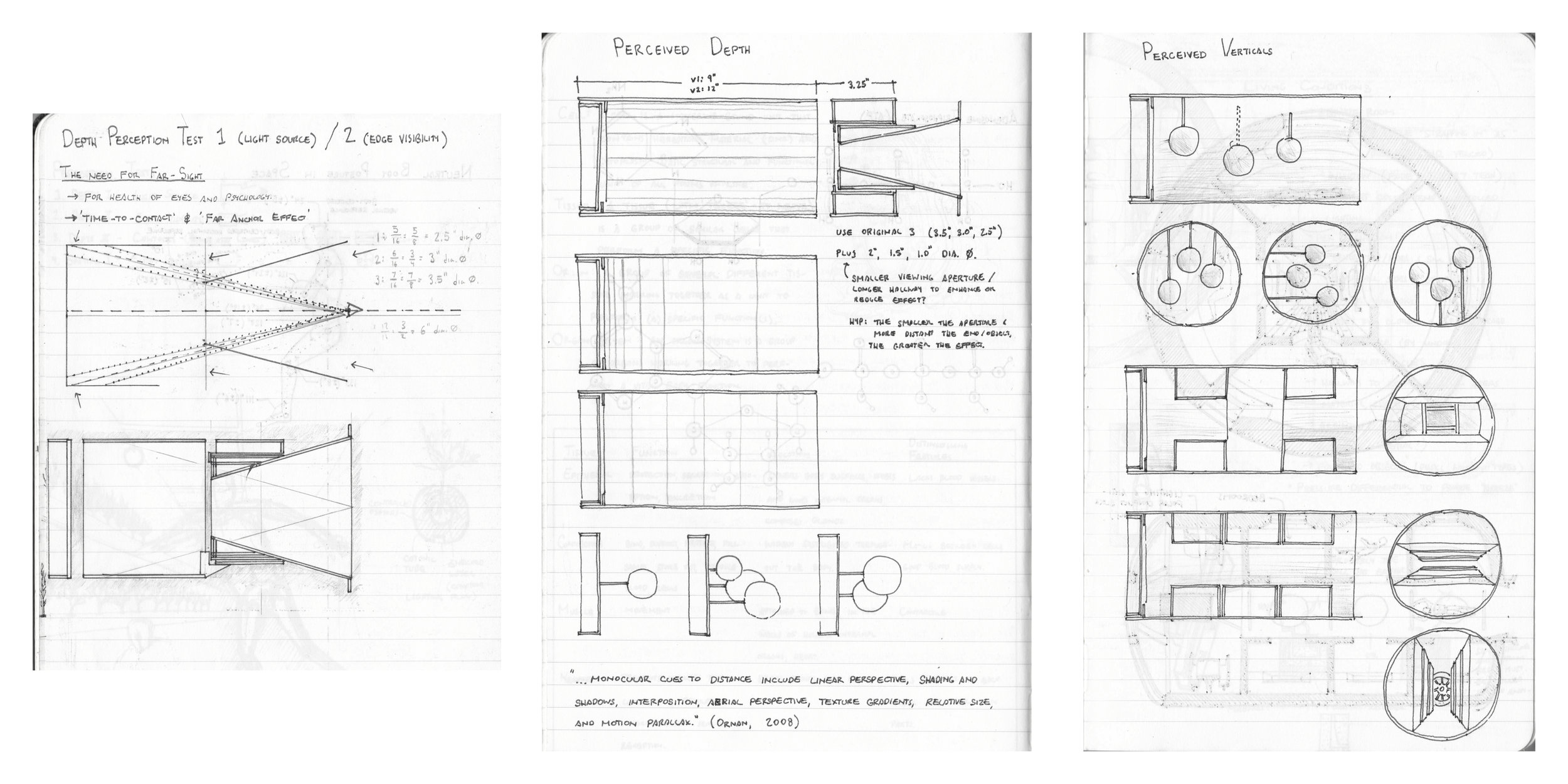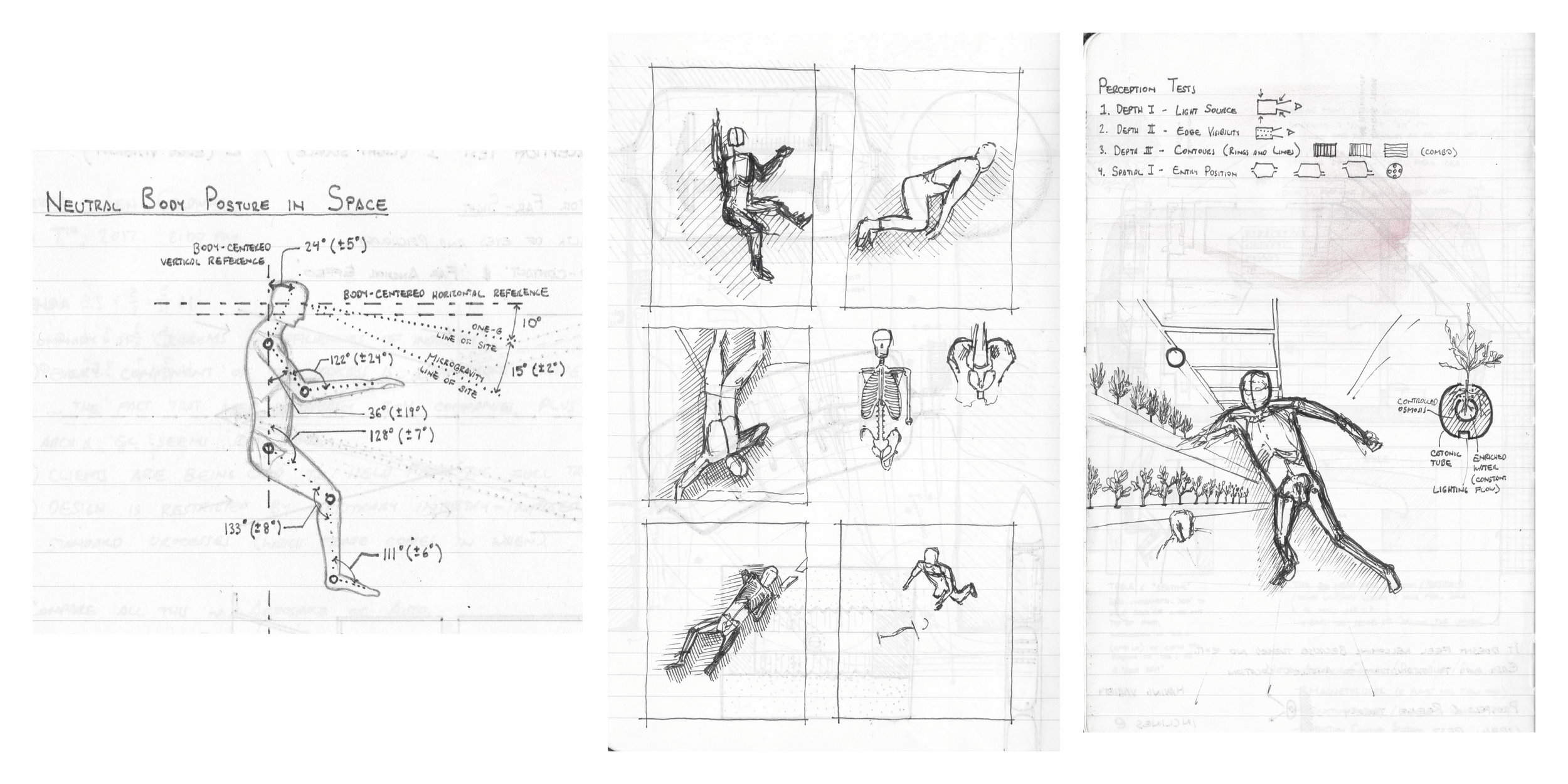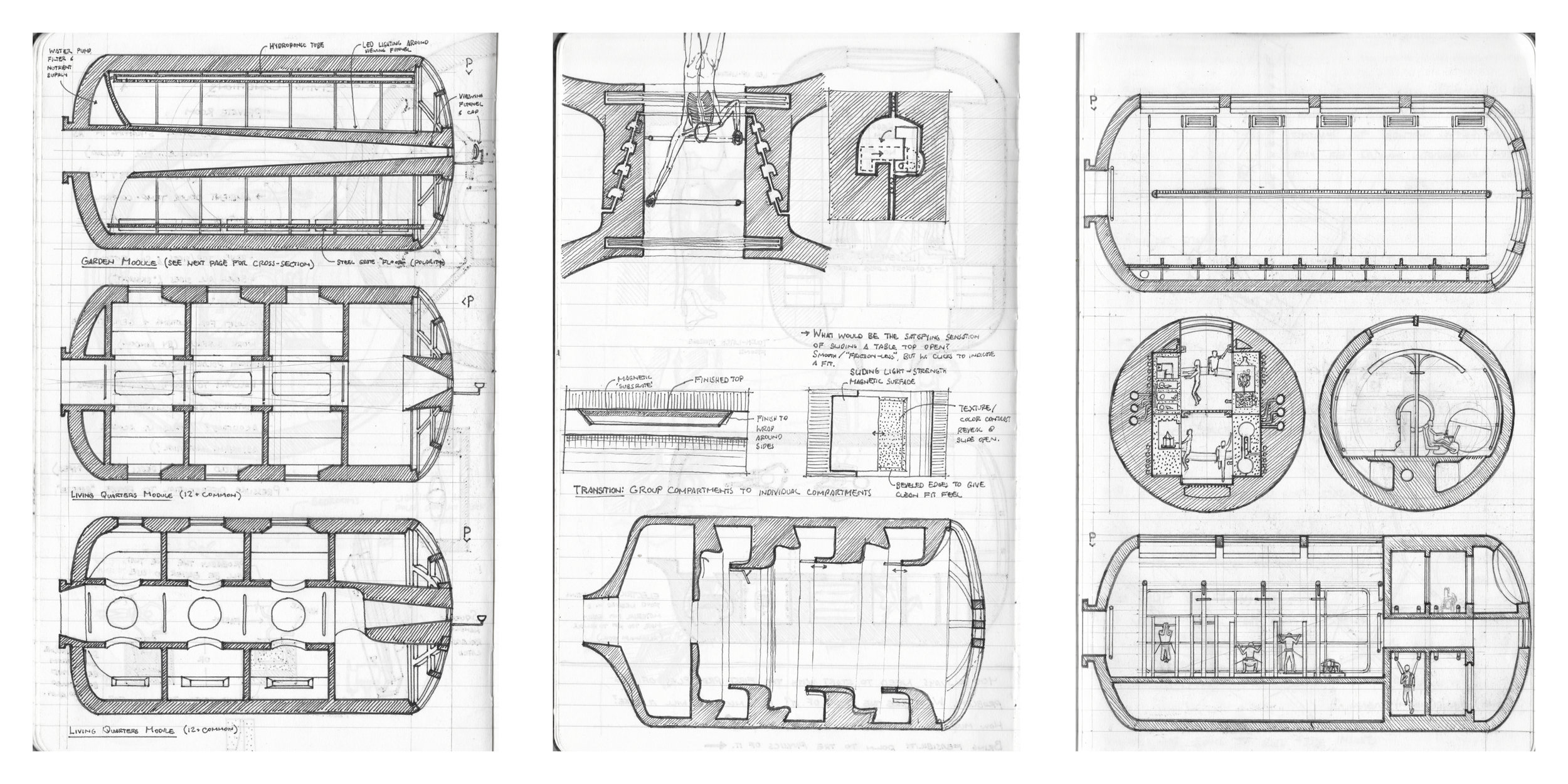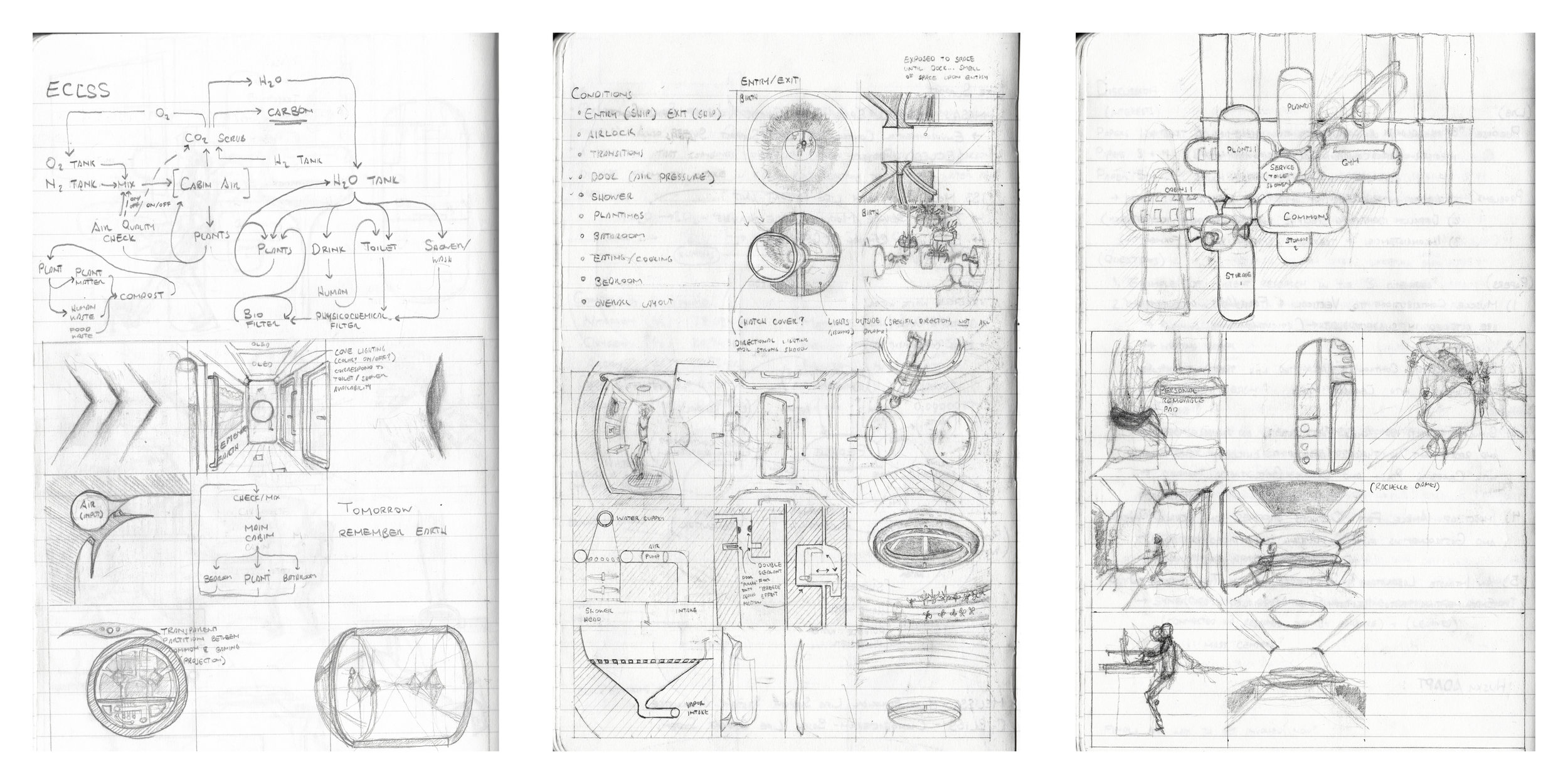Rumination
As humanity grows to become more spacefaring, the experience of outer space will morph from professional, to novel, to mundane. The habitats that will enable our existence in the inherently hostile environment will have to grow more accommodative to the physiological and psychological demands of their residents. This will be achieved by crafting specific visual, tangible, auditory, and olfactory cues delivered through architectural elements, ergonomic forms, intuitive mechanisms, environmental control, and life support systems.
One such example is the use of visually polar cues to indicate an artificial "ground". Humans have evolved to navigate only in yaw; pitch and roll are not our areas of expertise. When forced to deal with these axes of movement with the added bonus of having no gravireceptor cues, disorientation becomes prolific. SPATIAL ORIENTATION AND NAVIGATION IN MICROGRAVITY by Dr. Charles Oman of the Man Vehicle Laboratory (MVL) at the Massachusetts Institute of Technology AeroAstro Department well documents the effects of polar visual cues, and the lack of them, on astronauts experiencing weightlessness. It is because of this research that the concepts being drawn up here usually involve a clearly marked 'floor' and 'ceiling' and include elements that suggest a "down" (think: a lamp 'hanging' from a ceiling via a stiff rod).
Execution of this task requires interdisciplinarity, a marriage between disciplines. Documented here are initial conceptions of such spaces, guiding an outline of the types of skillsets necessary for their development. Ideas developed under Space/Ruminate culminate into projects, like Theo-1, to begin assembling these concepts. Thus, this is an ongoing task, and further concepts should be expected.






